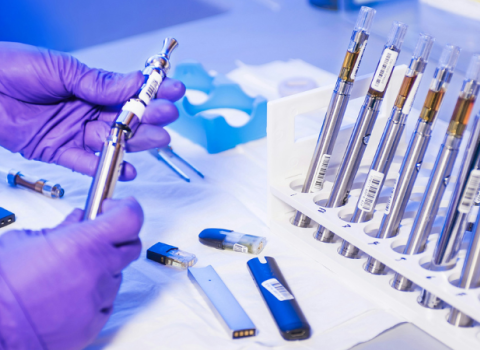
G. Steven Burrill, keynote speaker at BIO in Boston: IPOs at half of proposed valuations.
For example, Catalyst Pharmaceutical Partners of Coral Gables, Forida, which closed its IPO last November, sold 3.35 million shares at US$6 per share, a sharp reduction from the initial price range of $11 to $13 per share. Nor has it fared well since, with the price falling to $4.10 per share by the middle of May.
‘There could be another Genentech in China or India.’
Terry McGuire, managing general partner of Polaris Venture Partners
In addition, Burrill says the combined market capitalisation of quoted US biotechs will reach an all-time high of $575 billion in 2007, up 15 per cent year-over-year. “This is our finest hour,” Burrill said.
Looking to outside markets
While Nasdaq has long been seen as the engine of the US sector, there is now a trend for companies to raise money outside their domestic market. US biotechs, for example are looking to Europe’s AIM, Euronext and Swiss Exchanges. There also are opportunities for biotech companies to raise money on the DFX in Dubai, the Mothers Index in Tokyo, in Singapore and in Hong Kong. “Companies will increasingly finance in markets other than domestic markets,” Burrill said.
Merger and acquisition activity is continuing among the largest pharmaceutical companies, with big pharma buying biotech companies and large biotech companies taking over smaller biotechs. “Larger transactions are getting more frequent,” said Burrill.
But the environment for big pharma is heading in a troublesome direction. There are many causes: the growing market share of generic biopharmaceuticals, big pharma losing patents on blockbuster drugs, and the need to go outside for innovation. “In the $640 billion worldwide market for pharma sales, increasingly drugs are from small companies,” Burrill said. “And new, even small biotech companies are international from the get-go today.”
Terry McGuire, managing general partner of Polaris Venture Partners in Boston, a firm that backs entrepreneurial companies, agreed that global markets will be important. “Venture capital is often said to be a local business, but we are very mindful there are great resources of research and venture capital offshore,” he said in a panel discussion. Polaris hasn’t invested in China or India as yet. “But there could be another Genentech in China or India,” he said.
…and overseas for treatment
Another trend is of patients going overseas for treatment. “Stem cell tourism has become a major business with some successes in China, Mexico, the Netherlands, Russia and the Dominican Republic,” Burrill said.
‘Stem cell tourism has become a major business.’
G, Steven Burrill
Big new market opportunities are emerging in agricultural biotechnology, molecular-based and in vitro diagnostics, neurodegenerative diseases, obesity/diabetes, and disease prevention. With the ageing population putting budgets under pressure, Burrill expects healthcare to dominate the 2008 US presidential campaign.
Emerging markets
On the global front, developing economies like India and China, are playing a larger role. China is moving rapidly into proprietary products, as is India, which has a tremendous innovation base, Burrill said.
China also will become a top performer in generics with Western partners, as well as with gene therapy, stem cell research, chemistry services and traditional Chinese medicines.
India’s fledgling $1.5 billion biotech industry has been growing at a compound annual rate of 30 per cent since 2003-2004 and the Burrill report predicts it should achieve its goal of $25 billion in revenues by 2010. The sector had investments of $367 million in 2005-2006, compared with $270 million the prior year.
The industry puts about 25 percent of its revenue into research and building infrastructure, and the sector today comprises more than 280 companies growing at 35 to 40 per cent annually for the past three years.
“India and China have the ability to transform the industry because of low cost,” said Jesse Treu, a partner with venture capital and investment company Domain Associates in Princeton, New Jersey. His firm is working with its first joint venture between an American company and an Indian company, in which the Indian partner will perform the medicinal chemistry.
India sells its skills
While India built its information technology sector on the basis of lower costs, it is selling its skills in developing the biotech sector. “Don’t come to India for low cost. Come for opportunity,” said Rashni Barbhaiya, CEO of Advinus Therapeutics Pvt, Ltd, Bangalore, India. “India can help in target identification to proof of concept, to improve success. It’s our core strength.”
Over the past year there has been an East-West fusion, an experiment in globalization that is a new paradigm, said Swati Piramal, director of Nicholas Piramal India Ltd., Mumbai, India. With a new patent law in 2005, Indian companies are fighting for better intellectual property protection. Nicholas Piramal is one of the top 10 contract manufacturers for drugs in the world and is one of the largest suppliers to Pfizer.
‘India makes the most affordable, quality, generic medicines,
Box Text
While Nicholas Piramal has established itself as a contract manufacturer, it also has five new patents and aims to commercialise an in-house discovered drug by 2010. The lead compound P276 in phase II studies in Canada. The cancer treatment is based on a naturally-occurring extract of an Indian plant.
“India makes the most affordable, quality, generic medicines,” said Ramesh Adige, executive director of Ranbaxy Laboratories Ltd, Gurgaon, India. The company had global sales of $1.34 billion in 2006, and aims to be a $5 billion company by 2012, when it also aims to be a top 5 global generics player. International business is about 80 per cent of sales. “Our strengths are aggressive marketing, manufacturing efficiencies and good R&D capabilities,” said Adige. The bulk of its business, $380 million, is in the US, followed by $194 million in Europe. The company has 1,200 scientists and spent $100 million on R&D in 2006.





 A unique international forum for public research organisations and companies to connect their external engagement with strategic interests around their R&D system.
A unique international forum for public research organisations and companies to connect their external engagement with strategic interests around their R&D system.